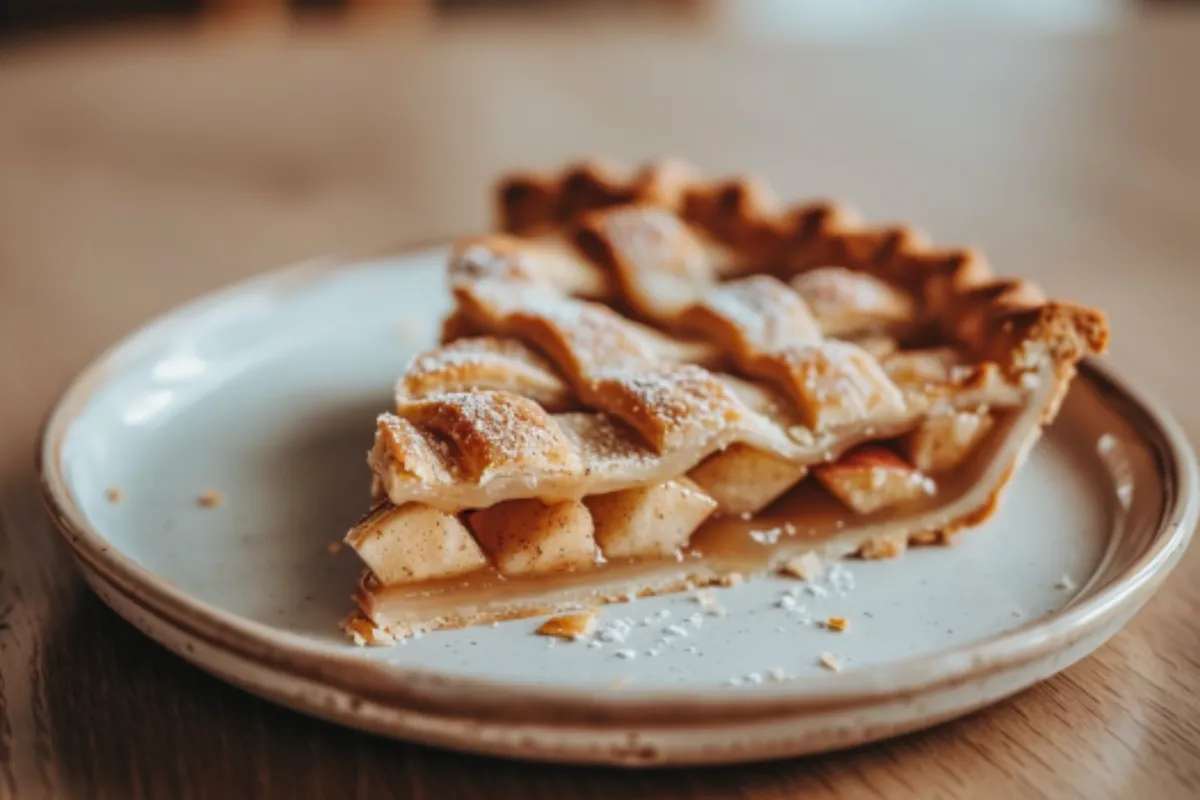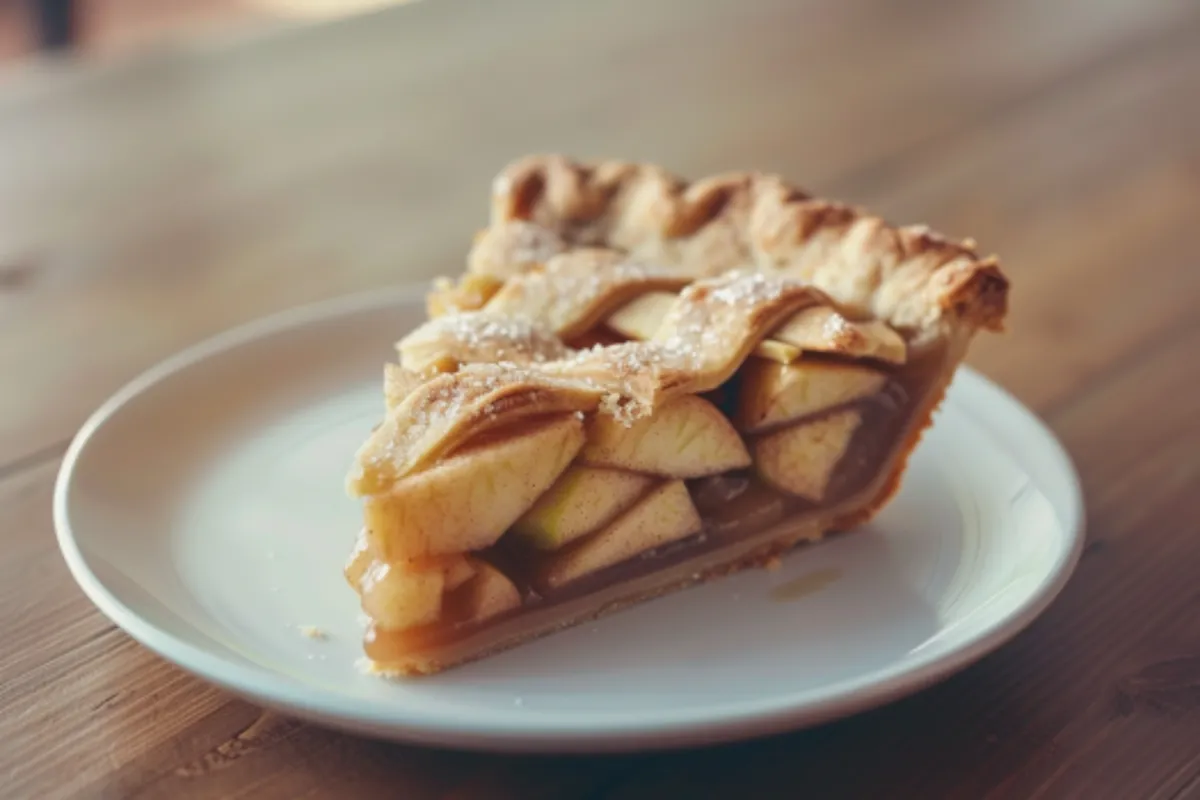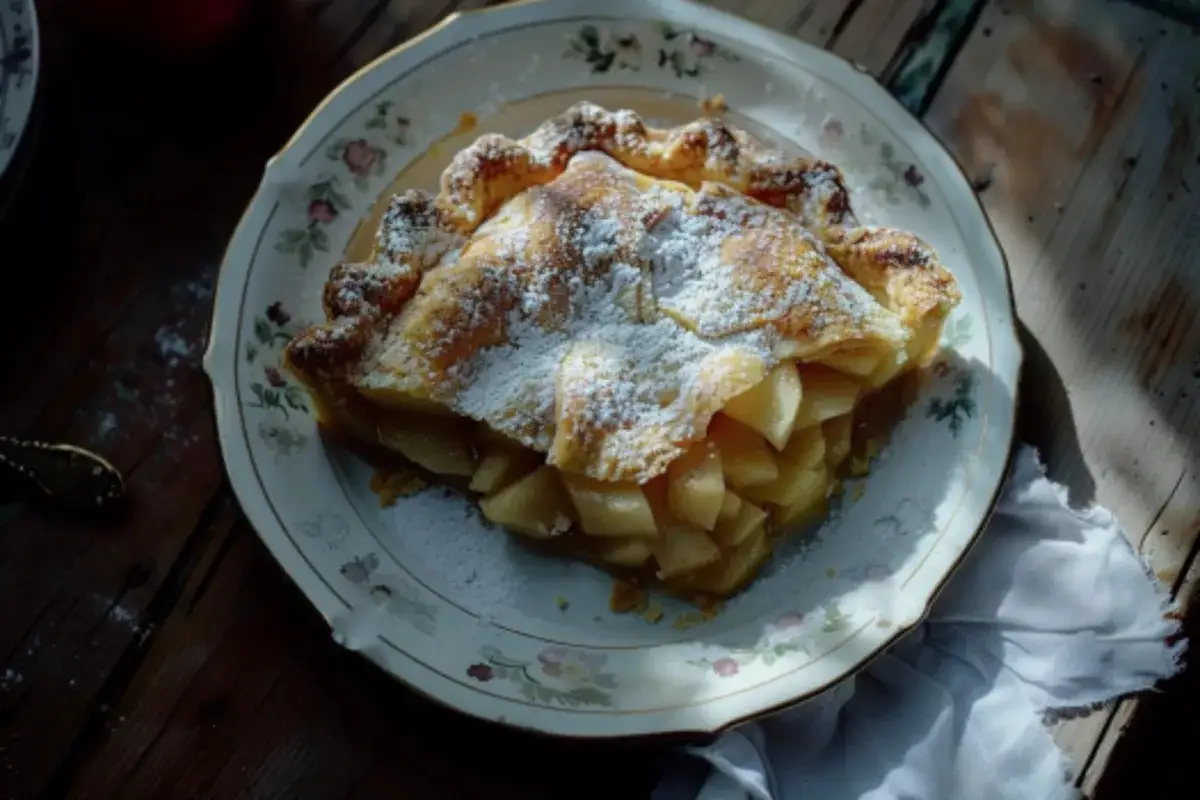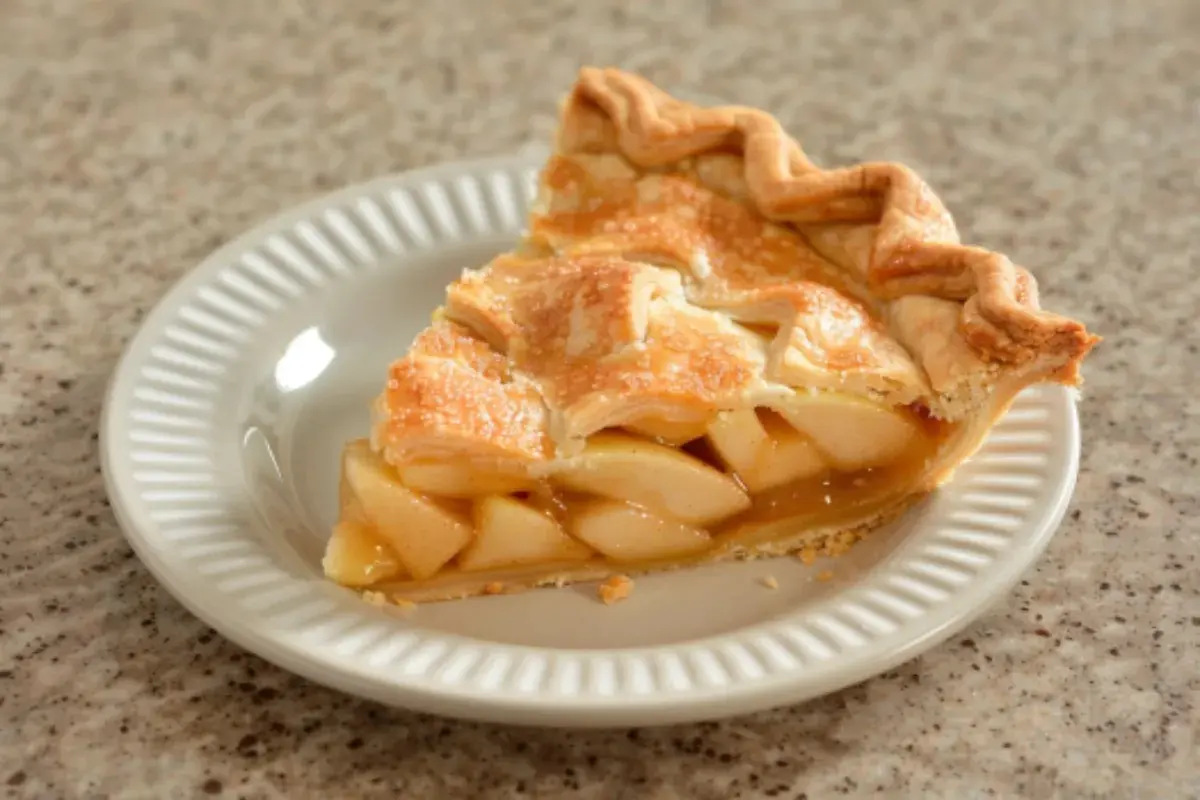When it comes to making a great apple pie, it’s easy to assume that any apple will do. After all, apple pie is a classic dessert enjoyed by many, and as long as you have apples, you’re set, right? Unfortunately, that’s not the case. Choosing the wrong type of apple can result in a pie that’s overly sweet, too soft, or missing the tangy flavor that gives the best apple pies their irresistible charm.
Choosing the right apple is one of the most critical steps in ensuring a pie with the perfect texture and balanced flavor. While many apples are excellent for pies, there are several varieties that you should avoid. In this detailed guide, we’ll go over what apples not to use for apple pie and explain why they don’t work well in a baked dessert.
We’ll also cover the ideal qualities of apples for pies, some alternative apple suggestions, and how to make the most of the apples you already have on hand.
Why Does Apple Selection Matter for Apple Pie?

The beauty of an apple pie lies in the contrast between the tender, slightly crisp apple filling and the flaky, golden crust. To achieve this, you need apples that maintain their structure during baking, without turning to mush or releasing too much moisture. Additionally, a balance between sweet and tart flavors is key to making an apple pie that doesn’t overwhelm the palate with too much sweetness or fall flat due to blandness.
For more details on how apple variety impacts baking, check out this guide to the best apples for baking.
Key Factors in Apple Selection:
- Firmness: The apples need to retain some texture and bite after being exposed to the heat of the oven. Soft apples tend to break down, resulting in a pie filling that’s more akin to applesauce.
- Acidity: Tart apples create a perfect balance by cutting through the sweetness of the spices and sugar usually found in apple pie filling. Without some acidity, the pie can taste overwhelmingly sweet.
- Moisture Content: Apples that are too juicy can release excessive amounts of liquid when baked, which can cause the pie filling to become runny and make the crust soggy. While some juiciness is essential for the filling, the best apples for pies strike a balance.
- Flavor Complexity: Apples with a harmonious blend of tartness and sweetness elevate the pie, delivering a burst of rich apple flavor in every bite. Bland apples, on the other hand, can cause your pie to taste flat, even if the texture is right.
Apples to Avoid for Apple Pie
Some apples are wonderful for snacking but disastrous for baking. The following apples either become too mushy, too sweet, or too bland when baked, making them unsuitable for use in a pie.
1. Fuji Apples – Too Soft and Sweet
Fuji apples are incredibly popular for eating fresh. They’re known for their sweetness and crisp texture when raw. However, Fuji apples are not ideal for pies because of their high moisture content and soft texture once baked.
When cooked, Fuji apples tend to break down excessively, turning overly soft and almost mushy in texture. The excessive juice they release can make your pie filling watery, which not only compromises the texture of the pie but also makes it difficult for the crust to bake properly.
Why Avoid Fuji Apples?
- They have a high water content, leading to a runny pie filling.
- The soft texture doesn’t hold up during baking, turning into mush.
- Their sweetness can overwhelm the other flavors in the pie.
Best Use: Fuji apples are perfect for snacking and making fresh fruit salads. However, if you do want to use them in a pie, combine them with firmer, tarter apples to help balance out the flavor and texture.
2. Red Delicious Apples – Soft and Overly Sweet
Red Delicious apples are among the most commonly available apples for eating fresh. They are widely loved for their sweet flavor and crisp texture when raw. However, they don’t make the cut when it comes to baking apple pies. The flesh of a Red Delicious apple is quite soft, and when baked, it tends to become too mushy. Furthermore, their high sugar content can lead to a cloying sweetness in your pie.
These apples are notorious for turning into a mushy mess when baked. What’s more, the lack of tartness means that the apple flavor doesn’t shine through the spices and sugar. Instead of a balanced, flavorful pie, you’ll be left with an overly sweet, bland dessert that lacks the complexity of flavor a good apple pie should have.
Why Avoid Red Delicious Apples?
- They soften too much during baking, creating a mushy texture.
- The sweetness of Red Delicious apples can make your pie overly sugary.
- Their flavor doesn’t stand up to spices and sugar, leading to a flat-tasting pie.
Best Use: These apples are best for fresh eating or in salads, where their crisp texture and sweetness are showcased without the need for heat. If you do try to use Red Delicious in a pie, mix them with a firm, tart apple variety like Granny Smith to help retain texture.
3. Gala Apples – Mild and Mushy
Gala apples are another apple variety that’s commonly available year-round. They’re mild in flavor and have a naturally soft texture. While they’re great for eating fresh or adding to fruit salads, they don’t perform well in baked goods, particularly pies. Gala apples soften too much when cooked, turning into a mushy filling that lacks the firm structure you want in an apple pie.
Additionally, their mild flavor means they get overshadowed by the spices and sugar in the pie filling. The result is a bland, unremarkable pie that doesn’t highlight the apple flavor.
Why Avoid Gala Apples?
- Their soft texture breaks down too much during baking.
- The mild flavor can get lost in a pie’s rich combination of spices and sugar.
- Lacks the tartness needed to create a well-balanced pie filling.
Best Use: Gala apples are excellent for fresh eating or juicing. If you want to use them in baking, combine them with a tart, firm apple variety to maintain the right texture and add flavor complexity.
4. Golden Delicious Apples – Risk of Over-Sweetness
Golden Delicious apples are often used in baking because of their versatility, but they come with some risks, especially when used in a pie. These apples are naturally sweet, which can result in an overly sugary pie if additional sugar is added to the filling. Additionally, while they start out firm, Golden Delicious apples soften significantly when baked, which can lead to a pie with a mushy texture.
If you do want to use Golden Delicious apples in your pie, it’s best to combine them with a firmer, more tart variety to help balance the flavors and textures. Otherwise, the pie can end up too sweet and lacking the textural contrast between the soft filling and the crisp crust.
Why Avoid Golden Delicious Apples?
- Naturally very sweet, which can overpower the pie’s flavors.
- Softens too much when baked, leading to a mushy pie filling.
- Lacks the tartness needed to balance the sweetness of the filling.
Best Use: These apples are great for applesauce or fresh fruit recipes, but if you want to use them in pies, be sure to pair them with a more tart, firm apple to achieve the right balance.
5. McIntosh Apples – Sweet and Soft
McIntosh apples are beloved for their sweet, tangy flavor and soft, juicy texture. However, while they’re delicious raw, they don’t hold up well when baked. McIntosh apples tend to break down completely when exposed to heat, turning into an almost sauce-like consistency. This makes them unsuitable for pies unless you want a pie with a filling that’s more like apple butter than traditional apple slices.
If you’re determined to use McIntosh apples in your pie, consider combining them with a firmer variety that holds its shape well during baking. However, for most bakers, there are better apple choices that don’t require this extra effort.
Why Avoid McIntosh Apples?
- Breaks down too much during baking, creating a mushy filling.
- Their naturally soft texture doesn’t hold up under heat.
- Overly sweet, especially when paired with sugar and spices.
Best Use: McIntosh apples are ideal for applesauce, apple butter, or any recipe that calls for a smooth, pureed texture.
6. Ambrosia Apples – Mild and Too Sweet
Ambrosia apples are a relatively new variety known for their sweet, honey-like flavor and crisp texture when fresh. While they’re delightful to eat raw, their mild flavor and high sugar content make them less than ideal for apple pie. When baked, Ambrosia apples tend to become too soft and lose much of their flavor, resulting in a pie that’s overly sweet and lacking in complexity.
Because Ambrosia apples don’t provide the tartness or acidity needed to balance the sweetness in apple pie, they’re better suited for other desserts or raw applications.
Why Avoid Ambrosia Apples?
- Too mild in flavor for baking.
- Lacks the tartness needed to balance the sweetness of the pie filling.
- Becomes too soft during baking, resulting in a mushy filling.
Best Use: Ambrosia apples are perfect for snacking or adding to salads. They can also be used in fresh desserts where their mild, sweet flavor can shine without being overshadowed by other ingredients.
7. Jonathan Apples – Flavorful but Easily Overcooked
Jonathan apples are known for their tartness and flavor, but they soften quickly when baked. This makes them less than ideal for apple pie, as they can easily turn to mush if overbaked. However, their flavor is excellent, and they can be used in pies if paired with a firmer apple that can retain its texture during baking.
If you use Jonathan apples in a pie, be mindful of the baking time and temperature to prevent them from becoming too soft.
Why Avoid Jonathan Apples?
- Softens quickly when baked, leading to a mushy pie filling.
- Can be used in pies, but requires careful pairing with firmer apples.
- Flavorful, but prone to breaking down during cooking.
Best Use: Jonathan apples work best in pies when mixed with firmer varieties like Granny Smith or Honeycrisp to maintain texture.
Apples That Can Be Hit or Miss for Apple Pie

While some apples are clearly unsuitable for pie, others fall into a gray area. These apples can work in certain situations but may not always deliver the best results. Whether these apples succeed in your pie depends on the recipe, the specific apples you’re using, and your personal preferences.
1. Braeburn Apples – Balanced but Variable
Braeburn apples are widely regarded as one of the top choices for pies, thanks to their perfect balance of sweet and tart flavors and their firm, sturdy texture. However, the texture of Braeburn apples can vary depending on the ripeness. Overripe Braeburn apples may become too soft during baking, leading to a filling that’s mushy rather than tender.
That said, when Braeburn apples are firm, they hold their shape well and offer a complex flavor that pairs beautifully with cinnamon, nutmeg, and other pie spices. They also have a moderate moisture content, which prevents the filling from becoming too watery.
Why Braeburn Apples Can Work:
- Excellent flavor balance between sweet and tart.
- Holds shape well when firm and ripe.
- Moderate moisture content, preventing a soggy pie filling.
Best Use: Braeburn apples are great for apple pies when they’re firm and ripe. Consider mixing them with a tart variety like Granny Smith for a well-balanced pie.
2. Jonagold Apples – Flavorful but Rare
Jonagold apples are a cross between Jonathan and Golden Delicious apples, offering the best of both worlds in terms of flavor and texture. They have a sweet-tart flavor profile that’s perfect for pies, and their firm texture holds up well during baking. However, Jonagold apples can be hard to find in many grocery stores, limiting their use for some bakers.
If you can get your hands on Jonagold apples, they’re an excellent choice for apple pie. Their balanced flavor and firm texture make them one of the top apple varieties for baking.
Why Jonagold Apples Can Work:
- Excellent balance of sweet and tart flavors.
- Holds shape well during baking.
- Firm texture prevents the filling from becoming mushy.
Best Use: Jonagold apples are ideal for pies if you can find them. They don’t need to be paired with other apples, but mixing them with a tart variety can enhance the flavor even more.
How to Improve Your Apple Pie Filling

Even if you’ve accidentally used an apple that doesn’t hold up well in pies, all is not lost. There are a few tricks you can use to improve the texture and flavor of your pie filling, even if you’re working with apples that are less than ideal for baking.
For example, learning how to thicken apple pie filling can save your dessert if the filling becomes too watery.
1. Mix Apple Varieties
One of the best ways to create a flavorful and textured apple pie filling is to mix different apple varieties. Combining firm, tart apples like Granny Smith with sweeter, softer apples like Honeycrisp or Braeburn ensures that your pie has a balance of flavors and textures. The tart apples provide acidity, while the sweeter apples add complexity to the filling.
2. Control the Moisture
If you’re using especially juicy apples, such as Fuji or Gala, try pre-cooking them slightly before adding them to your pie to prevent excess moisture. This allows some of the excess moisture to evaporate, reducing the risk of a runny filling. You can also add a thickening agent like cornstarch or flour to the filling to help absorb some of the liquid.
Frequently Asked Questions About Apple Pie Apples
1. Why are Fuji apples bad for apple pie?
- Fuji apples break down too much during baking and release a lot of moisture, making the pie filling too soft and watery.
2. Can I use Red Delicious apples in apple pie?
- While you can technically use them, Red Delicious apples tend to become mushy and too sweet when baked, making them less than ideal for pies.
3. How do I prevent apples from turning mushy in pies?
- Choose firm apples like Granny Smith or Honeycrisp that hold their shape when baked. Avoid softer varieties like Fuji or McIntosh.
4. What is the best combination of apples for a pie?
- A mix of tart and sweet apples works best. Try combining Granny Smith with Honeycrisp, Braeburn, or Jonagold for a balanced filling.
Conclusion: Selecting the Best Apples for Your Pie
Apple pie is a beloved dessert, but the success of your pie hinges on selecting the right apples. While some varieties like Granny Smith, Honeycrisp, and Braeburn work well for baking, others, such as Fuji, Red Delicious, and McIntosh, can lead to a pie that’s too sweet, too mushy, or lacking flavor complexity.
By understanding the key qualities that make apples ideal for pie, and by avoiding those that don’t hold up well to baking, you’ll ensure that your next apple pie is delicious, perfectly textured, and full of apple flavor.
And if you ever need creative ways to use apples beyond pies, you can check out this apple pie cookies recipe for more ideas on how to incorporate apples into your dessert repertoire.
With the right apples and a bit of technique, your homemade apple pies will turn out perfectly every time, making them a hit at any gathering.

